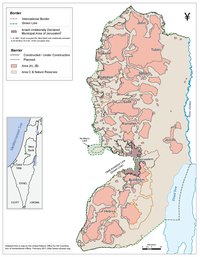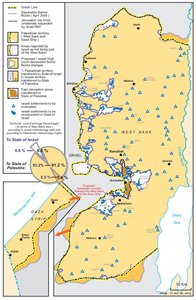THE ANNAPOLIS CONFERENCE AND THE OLMERT PEACE PLAN, 2007-2008
Map Details
In December 2006, Israeli Prime Minister Olmert and Palestinian President Abbas conducted the first of what was to become an extended series of meetings over the next two years aimed at reviving the peace process and working towards an agreement based on the 2003 Road Map. A few months later, the Arab League readopted the 2002 Arab Peace Initiative, calling on Israel to accept the regional solution to the conflict. Olmert's initial reaction was positive, but he eventually abandoned the regional track in favor of a continuation of bilateral negotiations with the PA in preparation for the upcoming Annapolis Conference of November 2007. US President Bush had announced the Annapolis Conference in a speech in July 2007, about a month after Hamas' takeover of the Gaza Strip. After denouncing the Hamas takeover, Bush had pledged to take "a series of steps to strengthen the forces of moderation and peace among the Palestinian people," which involved providing financial assistance to the PA; strengthening the US commitment to get the Israelis and Palestinians to resolve their issues as well as to help the Palestinians establish an institutional framework for a future Palestinian state. In taking these steps, the US would cooperate with the other members of the Middle East Quartet and its recently instated representative, former British Prime Minister Tony Blair. Furthermore, US Secretary of State Condoleezza Rice was to chair an international conference in which representatives from Israel, the PA and a number other relevant countries and international organizations would participate. In preparation for the conference, Olmert, Abbas and various other Israeli and Palestinian representatives held a series of meetings to draft a ‘Declaration of Principles’ regarding the core issues of the conflict. While Abbas tried to obtain tangible concessions from the Israelis as proof to the Palestinian public that negotiations where the best way to achieve peace, Olmert was hesitant to make any concrete promises that could hurt the domestic popularity of his government. Unsurprisingly, the parties failed to come up with the envisioned declaration. In the end, all Bush could present to the representatives of over 50 countries and international organizations attending the Annapolis Conference on 27 November 2007, was a vague "Joint Understanding", in which Olmert and Abbas expressed their intention to start a new round of bilateral negotiations aimed at reaching a final status agreement before the end of 2008 and to start implementing their obligations under the 2003 Road Map at once, with the US monitoring their progress. In the wake of the conference bilateral negotiations continued, but progress on reaching an agreement was slow, not the least because the efforts of the negotiators were undermined by a number of external factors. These included the escalation of violence between Israel and Hamas, which had boycotted the Annapolis Conference, culminating in the devastating Israeli military operation "Hot Winter" in 2008; increased Israeli settlement activity marking a failure of Israel to implement its obligations under the Road Map; and finally the weakening domestic position of the Olmert government. On 16 September 2008, Olmert presented Abbas with a comprehensive plan covering the contentious issues of security, Jerusalem, refugees and borders. On security, the plan outlined a number of principles that both sides had more or less come to agree on, including the "non-militarization" of Palestine, which would be allowed a police force but no national army or air force; the permanent deployment of an international military force (probably NATO) in the Jordan Valley and Israeli access to the Palestinian airspace and – if necessary for security purposes – Palestinian territory. With regard to Jerusalem, it envisioned Israeli sovereignty in Israeli neighborhoods and Palestinian sovereignty in Arab neighborhoods, so that both Israel and Palestine could have a capital in the city. Furthermore, the Old City of Jerusalem and a number of surrounding areas would be recognized as a "Holy Basin" and be placed under international "custody" with Palestine, Jordan, Saudi Arabia, the US and Israel collectively governing the area. While Abbas accepted this arrangement in principle, he disagreed with Olmert's definition of the Holy Basin. When it came to refugees, Olmert was prepared to recognize the suffering of – but not Israel's responsibility for – the Palestinian refugees and proposed the establishment of an international fund to pay Palestinian refugees for the loss of property they suffered in the 1948 War and if relevant, for their relocation to Palestine or a third country. In addition, about 5,000 Palestinian refugees (out of five million) would be allowed into Israel on humanitarian grounds. While Abbas accepted the compensation scheme, he objected to Israel taking in a mere 0.1% of Palestinian refugees. Finally, concerning borders the Olmert Peace Plan projected the Israeli annexation of between 6.3% and 8.8% of Palestinian territory, with land swaps compensating for 5.4% to 5.8%. Furthermore, a safe passage tunnel connecting the West Bank and Gaza would be established and a number of small settlements removed while some of the largest ones, including the Ariel settlement between Ramallah and Nablus, were to stay in place. This was unacceptable to Abbas, who had made it clear that he could allow over 60% of the settlers to remain in place, as long as the Ariel settlement, which formed a significant obstacle to Palestinian development, was removed. Although the Israeli and Palestinian negotiating teams had thus – against all odds – managed to make significant progress on reaching an agreement on some of the core issues of the conflict, there were still substantial differences that Olmert's plan did not take into account. As a result, Abbas could not accept the entirety of the Olmert Peace Plan, which was presented to him as "Israel's best offer." After Abbas refused to accept it, negotiations broke down, bringing the Annapolis process to a dissatisfying end.
Related Maps
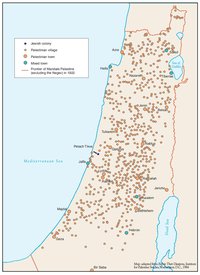
OTTOMAN PALESTINE, 1878
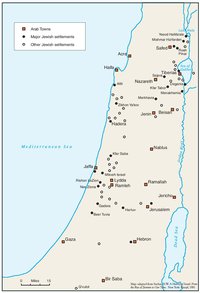
ARAB TOWNS AND JEWISH SETTLEMENTS IN PALESTINE, 1881-1914
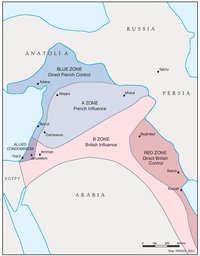
THE SYKES-PICOT AGREEMENT, 1916
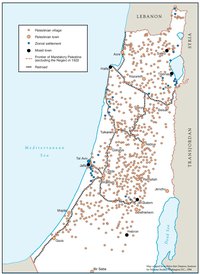
THE BEGINNING OF THE BRITISH MANDATE, 1920
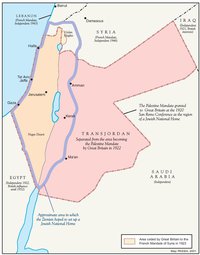
PALESTINE UNDER THE BRITISH MANDATE
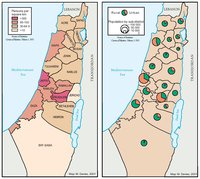
THE DEMOGRAPHY OF PALESTINE, 1931
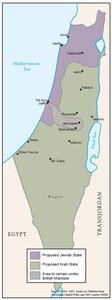
THE PEEL COMMISSION PARTITION PROPOSAL, 1937
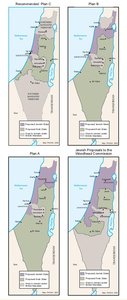
THE WOODHEAD COMMISSION PARTITION PROPOSALS, 1938
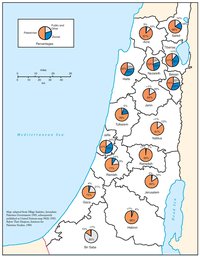
PALESTINIAN AND ZIONIST LANDOWNERSHIP BY SUB-DISTRICT, 1945
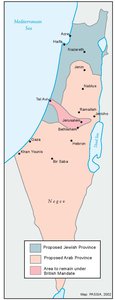
THE MORRISON-GRADY PARTITIONED TRUSTEESHIP PLAN, 1946
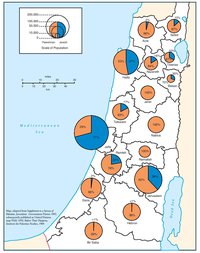
POPULATION OF PALESTINE BY SUB-DISTRICT, 1946
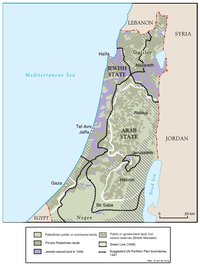
LAND OWNERSHIP IN PALESTINE, 1948
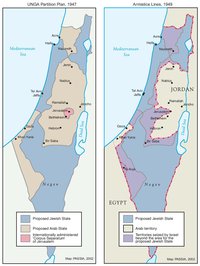
THE UNGA PARTITION PLAN, 1947 – THE 1948 WAR & THE 1949 ARMISTICE LINES
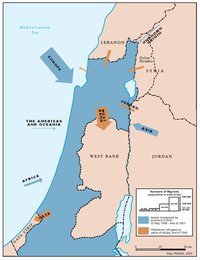
POPULATION MOVEMENTS, 1948-1951
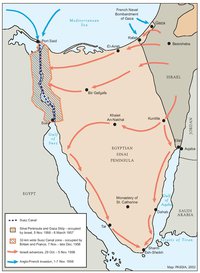
THE SUEZ WAR, 1956
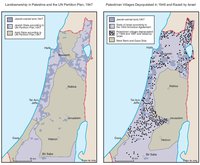
LAND OWNERSHIP IN PALESTINE AND THE UN PARTITION PLAN - PALESTINIAN DEPOPULATED AND DESTROYED VILLAGES, 1948-1949
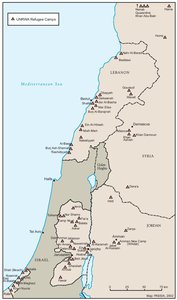
THE PALESTINIAN DIASPORA, 1958
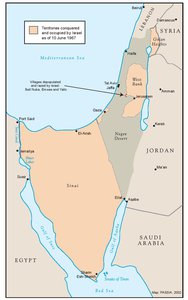
THE NEAR EAST AFTER THE JUNE 1967 WAR
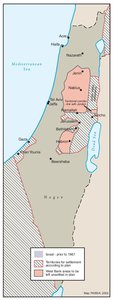
THE ALLON PLAN, JUNE 1967
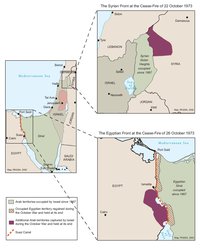
THE OCTOBER WAR, 1973
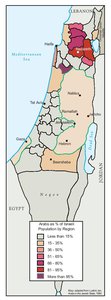
THE PALESTINIANS INSIDE ISRAEL, 1977
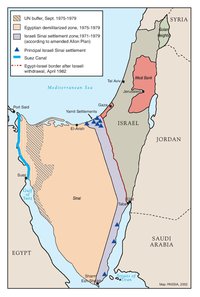
THE CAMP DAVID ACCORDS, 1978-1979
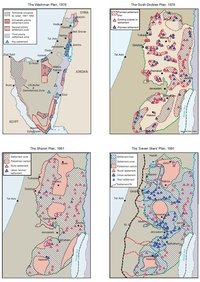
ISRAELI SETTLEMENT MASTER PLANS, 1976-1991
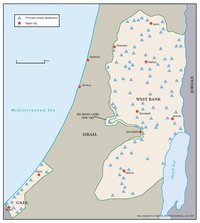
THE 1991 MADRID PEACE CONFERENCE & ISRAELI SETTLEMENTS
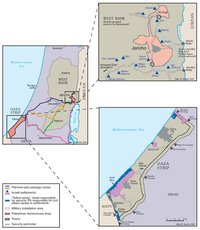
GAZA-JERICHO (OSLO I) AGREEMENT, CAIRO, 4 MAY 1994
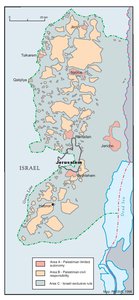
INTERIM (OSLO II) AGREEMENT, TABA, 28 SEPTEMBER 1995
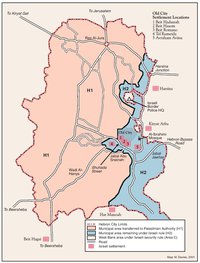
HEBRON PROTOCOL, 15 JANUARY 1997
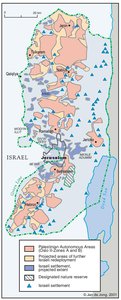
WYE RIVER MEMORANDUM, 23 OCTOBER 1998
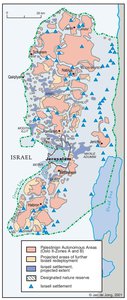
SHARM ESH-SHEIKH AGREEMENT, 4 SEPTEMBER 1999
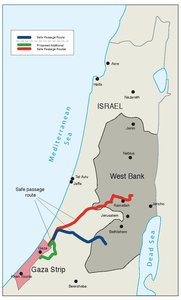
PROTOCOL CONCERNING SAFE PASSAGE BETWEEN THE WEST BANK AND THE GAZA STRIP, 5 OCTOBER 1999
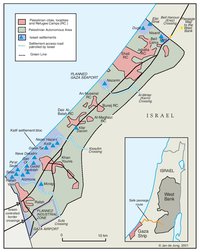
GAZA, 2000
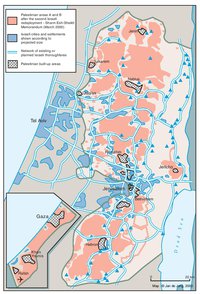
WEST BANK AND GAZA STRIP, MARCH 2000
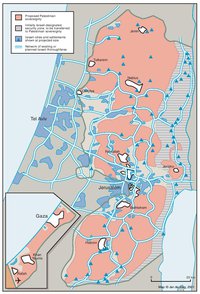
CAMP DAVID PROJECTION, JULY 2000
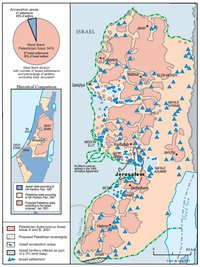
TABA TALKS PROJECTION, JANUARY 2001
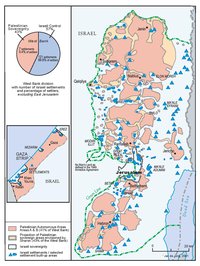
THE SHARON PROPOSAL, SPRING 2001
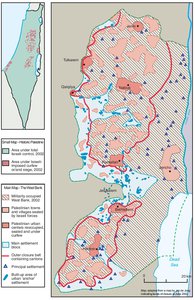
THE REINVASION OF THE PALESTINIAN TERRITORIES, 2001-2002
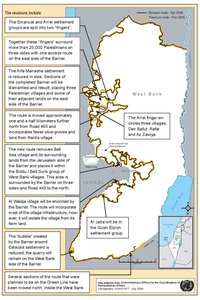
THE ROAD MAP, 2003
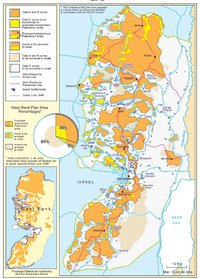
THE GENEVA INITIATIVE AND ACCORD, 2003
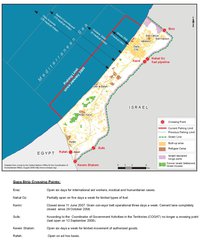
THE ISRAELI DISENGAGEMENT PLAN, 2003-2005
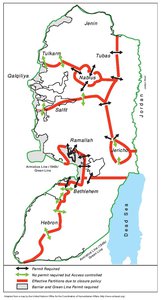
AGREED DOCUMENTS ON MOVEMENT AND ACCESS FROM AND TO GAZA, 2005
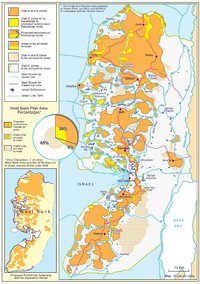
THE SETTLERS' PLAN FOR PALESTINIAN AUTONOMY, 2006
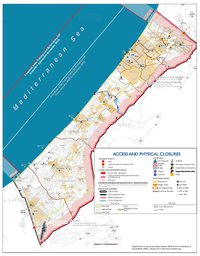
THE GAZA STRIP TODAY (2014)
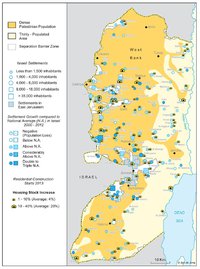
THE WEST BANK TODAY (2014)
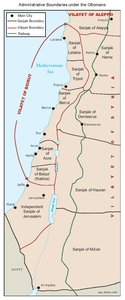
ADMINISTRATIVE BOUNDARIES

HEBRON
